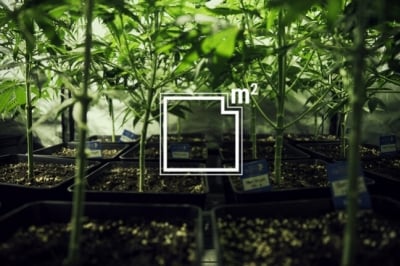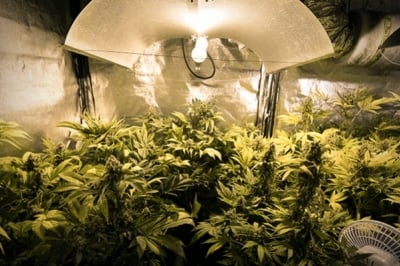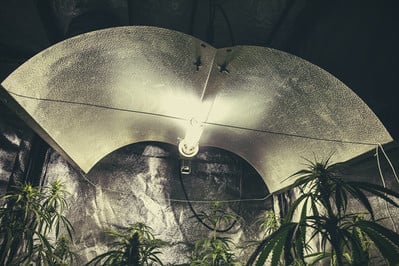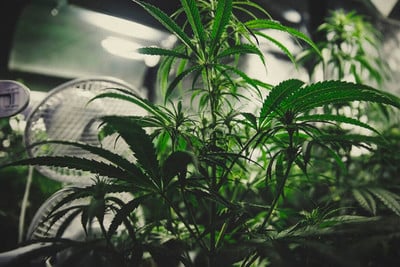.

The Best Reflective Materials for Indoor Cannabis Growers
You've bought the best-quality lights for your cannabis plants. But did you know, a lot of those precious photons will end up missing the canopy altogether? Instead, they end up being absorbed by walls and doors. However, by placing reflective materials in your grow space, you can bounce much of that lost light back to the leaves and buds.
Contents:
It doesn’t take much to keep your cannabis plants alive. They have a handful of demands, including high-quality nutrients and water. But of all their essential needs, light ranks at the top of the list. Your plants depend on light to conduct photosynthesis—the creation of sugars to fuel important physiological processes such as respiration and the creation of cell walls. Whereas outdoor cannabis plants have the luxury of direct sunlight, indoor plants rely on artificial sources.
Modern grow lights are powerful pieces of kit. With a huge range of LED, HPS, CFL, HID, and LEC options available, cultivators are spoilt for choice. But no matter how powerful your lights are, not every photon emitted from your purchase will reach your plants. Much of this precious light shoots off sideways and misses the canopy altogether—unless you utilise reflective surfaces. These shiny materials help to redirect light back to where you want it. Below, you’ll discover the most effective reflective grow room wall materials, and how to use them in your space.
What Are Reflective Grow Tent Materials?
Reflective materials are exactly as they sound; they help to bounce light off the walls back toward your cannabis plants.
The light positioned above your canopy doesn't beam photons down in a linear fashion. Instead, it emits light in a cone-like shape. The light in the middle portion of the cone hits the leaves and buds of your cannabis plant, but waves of light in the periphery hit the floor and walls to the side of your specimens. When this leaky light hits an absorbent surface, it goes to waste. However, you can harness the power of reflective materials to bounce this light back into the centre of the growing space, where it will help to fuel photosynthesis, growth, and bud development.
-
Why Are Reflective Materials Important for Growing Cannabis?
Reflective materials help growers make the most of their light source. In fact, cultivators can achieve up to 30% more light exposure by lining the walls of their growing space. For those working with compact setups, a smaller tent with Mylar lining ensures efficient light distribution without requiring additional reflective materials. This doesn’t require any more electricity or additional lights; it’s simply the result of optimising a resource that you already have at your disposal. More light means more energy and improved growth, meaning you can expect to see your plants grow faster and produce superior yields.
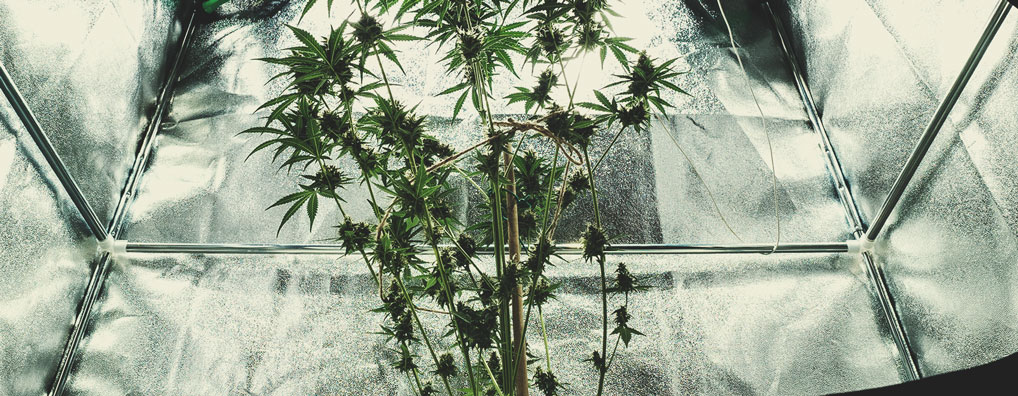
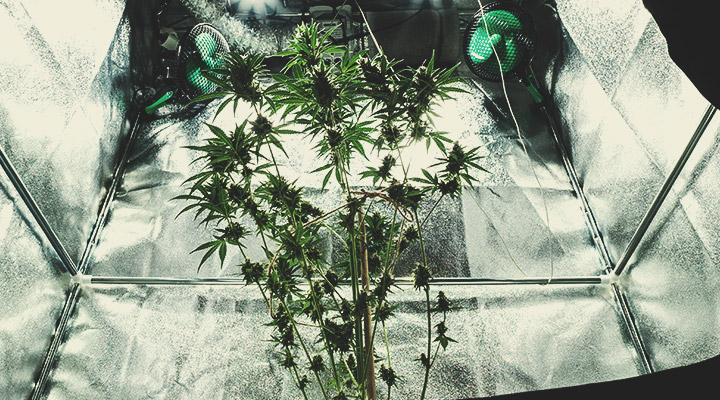
Reflective Materials for Growing Weed Indoors
Now you know the impressive benefits of light reflection, but what’s the best reflective grow tent material? There are plenty of materials out there that will bounce light back onto your plants, but some are much more effective than others. But don’t get too carried away with efficacy. Growers with a limited budget can utilise slightly less-reflective surfaces that still do a great job of distributing light to where you want it.
Here are some of our top suggestions for different budgets.
-
Aluminium Foil (55–60% Reflectivity)
Aluminium foil ranks as a fairly cheap option, especially if you only need to cover a small surface area. But cutting costs here comes at a “price”. This option has a reflectivity of 60% at best, which pales in comparison to some other materials. With that said, it will recover over half of the light that would otherwise absorb into the walls of your growing space.
You can cover your autumns in aluminium foil using various types of tape or adhesive sprays. However, you need to exercise care when covering your surfaces to prevent tearing the foil and creating crinkles. Also, it might not look like it, but the dull side of foil does a better job of reflecting light than the shiny side—keep this in mind when putting it up.
| Pros | Cons |
| Cheap | Delicate |
| Easy to instal | Creases and tears easily |
| - | Low reflectivity |
| Pros | Cons |
| Cheap | Delicate |
| Easy to instal | Creases and tears easily |
| - | Low reflectivity |
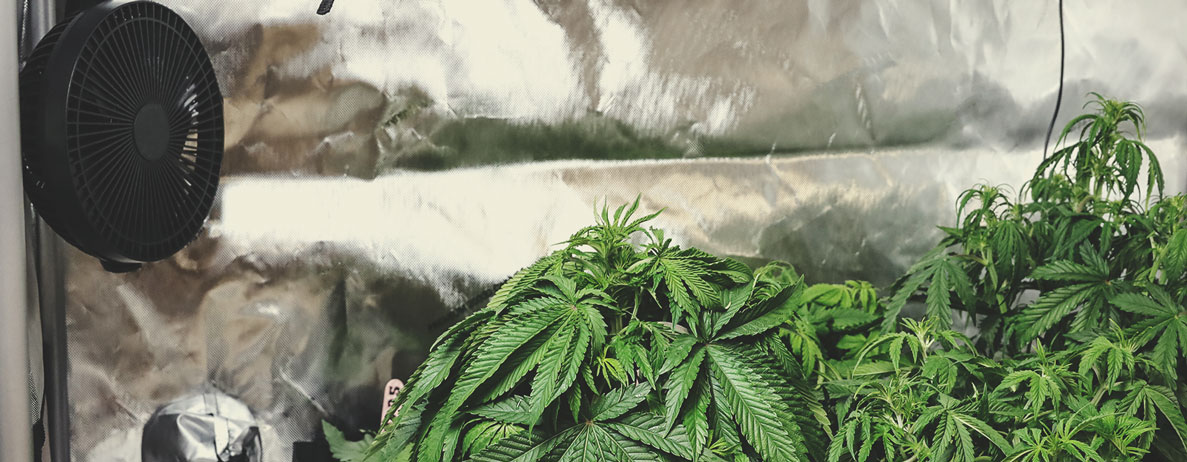
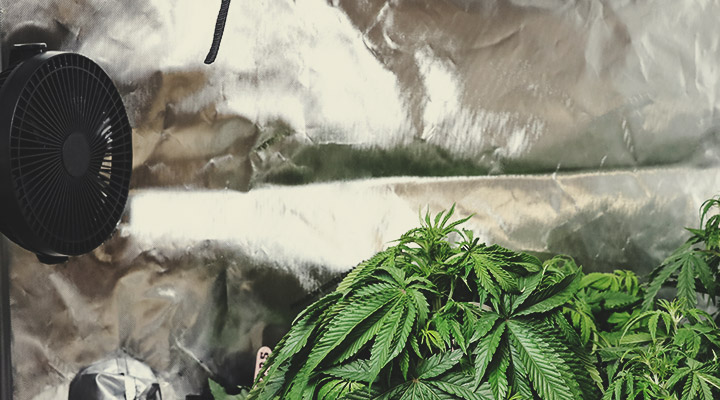
-
Emergency Blanket (60–70% Reflectivity)
When putting together your growing space, you probably didn’t consider browsing survival equipment for handy pieces of kit. Emergency blankets help to keep injured hikers alive and kicking by trapping up to 90% of their body heat. However, they also work quite well at bouncing light onto your cannabis plants.
These blankets are made of Mylar (more on that material later) and reflect up to 70% of light, making them more effective than aluminium foil for this purpose. You can also pick up a few emergency blankets without breaking the bank; they don’t cost much and cover a surface area of roughly 210 × 130cm (this varies among products). You can instal these using tape along the edges, or simply use double-sided adhesive strips in the corners.
| Pros | Cons |
| Cheap | Delicate and can tear easily |
| Good reflectivity | Creases easily, making it uneven |
| Good for temporary growing spaces | - |
| Pros | Cons |
| Cheap | Delicate and can tear easily |
| Good reflectivity | Creases easily, making it uneven |
| Good for temporary growing spaces | - |
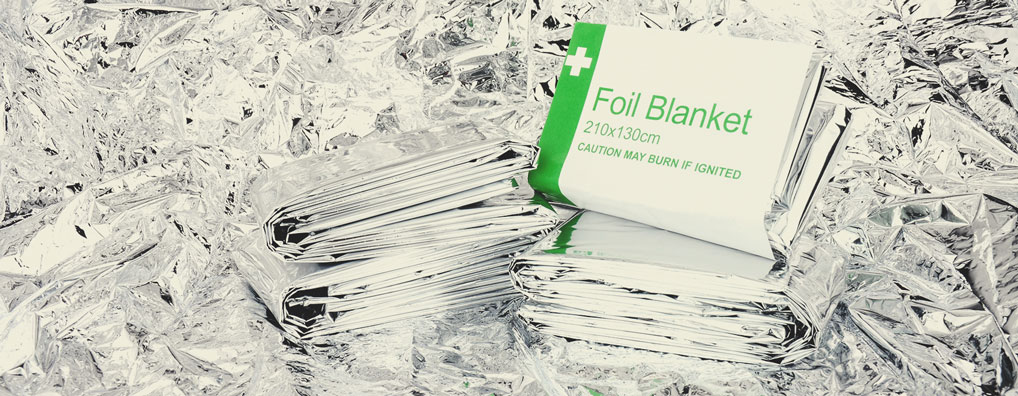
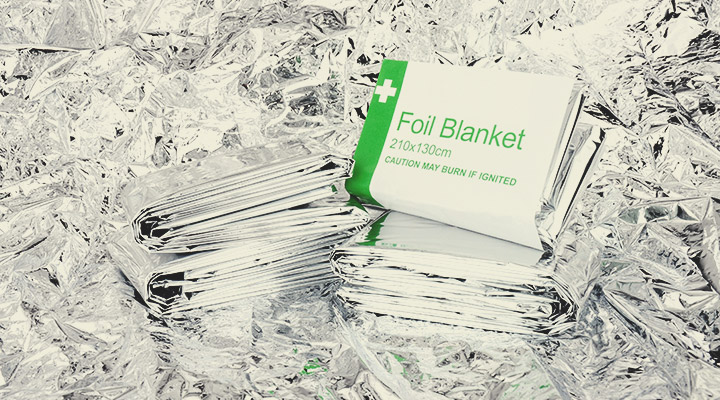
-
White Paint/Sheeting (80–90% Reflectivity)
Most grow tents come kitted-out with a reflective lining, but some cultivators prefer growing in open rooms. If that sounds like you, then you should consider painting the walls white. Whereas black paint absorbs light, white paint does a great job of reflecting it.
Sticking a roller into a tray of paint and slathering your walls will save you time and money; it doesn’t involve any technical DIY skills. You can also pick up a can of paint for fairly cheap and save the rest for whenever you next need it (you might even have some lying around in your shed). A reflectivity of up to 90% also means the vast majority of lost light will bounce back toward your cannabis plants.
| Pros | Cons |
| Easy to apply | Fairly expensive if you need to cover a large surface area |
| Good for long-term growing spaces | - |
| Great reflectivity | - |
| Pros | Cons |
| Easy to apply | Fairly expensive if you need to cover a large surface area |
| Good for long-term growing spaces | - |
| Great reflectivity | - |
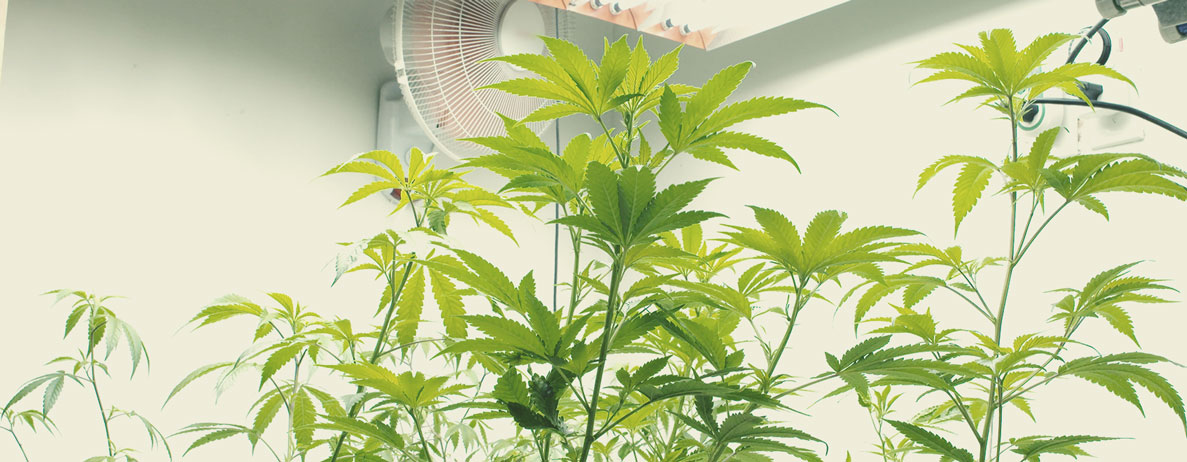
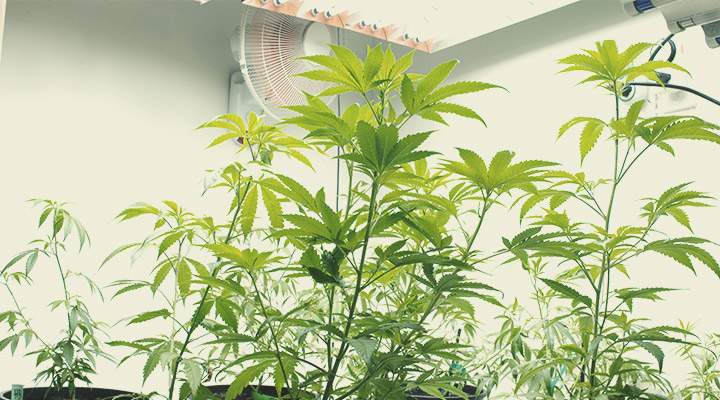
-
Panda Film (85–95% Reflectivity)
Panda film ranks as one of the best reflective materials. Many growers cover their grow rooms and greenhouses with this handy material. As the name of the product suggests, it’s black on one side and white on the other; it shouldn’t come as a surprise that you should position the white side facing away from the wall.
You can easily duct tape panda film onto walls, or use a staple gun to attach it to the inside of a grow tent. Panda film sells for roughly £20/€24 for a 20 × 2m roll.
| Pros | Cons |
| Highly reflective | Relatively expensive |
| Popular among cannabis growers | - |
| Smooth surface with minimal creases | - |
| Pros | Cons |
| Highly reflective | Relatively expensive |
| Popular among cannabis growers | - |
| Smooth surface with minimal creases | - |
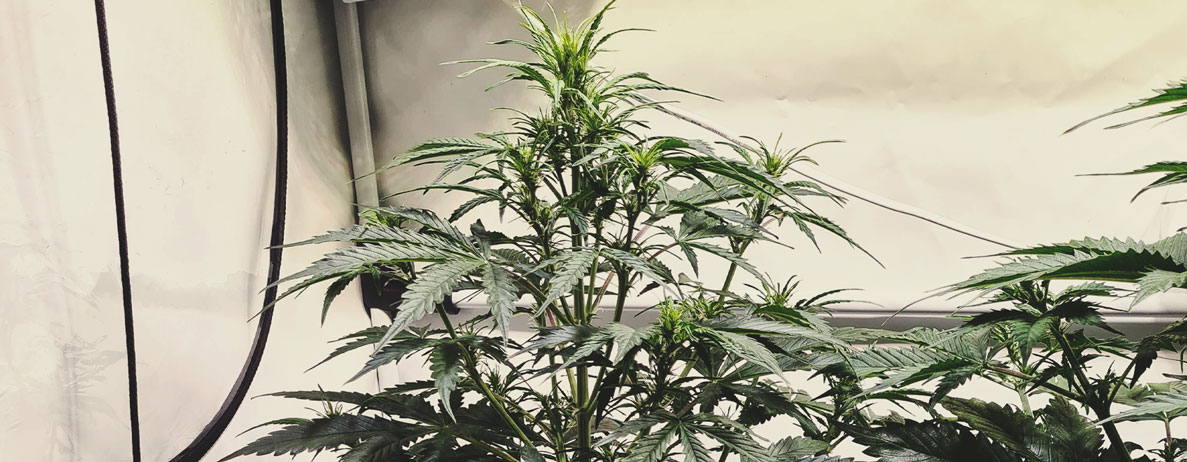
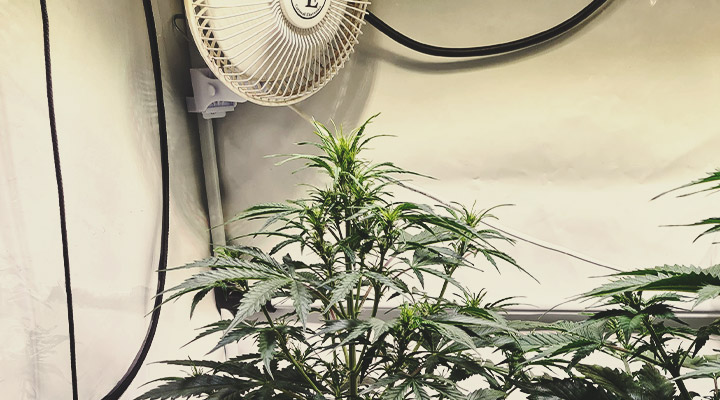
-
Orca Film (90–95% Reflectivity)
As well as being named after a black and white mammal, orca film shares a similar appearance with panda film. However, orca film offers some advantages that panda film doesn’t. This sheeting features white plastic microfibres that are more effective at reflecting and scattering light. This trait also makes orca film more durable and less likely to tear.
It’s also super easy to clean and mould resistant, so you won’t run into any smelly surprises. The downside? It can easily break the bank. Expect to dish out around £80/€96 for a 10 × 1.4m roll of the stuff.
| Pros | Cons |
| Highly reflective | Expensive |
| Mould-resistant | - |
| Specialised microfibres | - |
| Pros | Cons |
| Highly reflective | Expensive |
| Mould-resistant | - |
| Specialised microfibres | - |
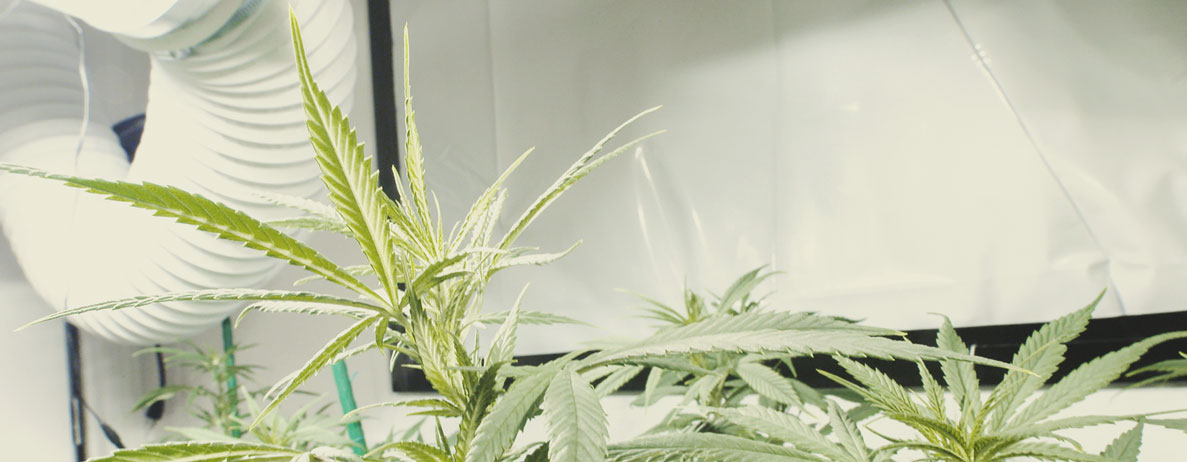
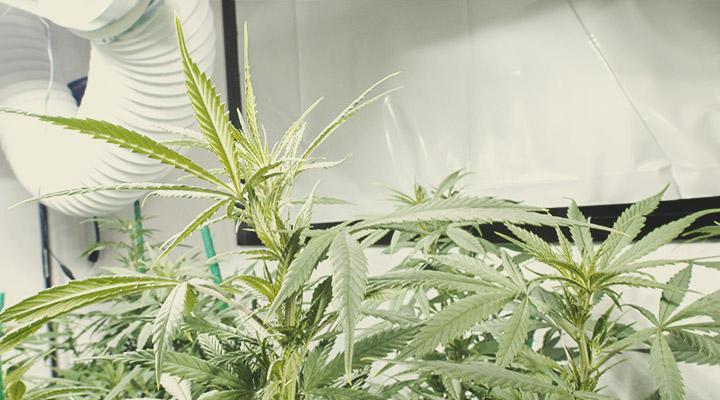
-
Mylar (90–95% Reflectivity)
Most grow tents are lined with Mylar—and for good reason. This material reflects up to 95% of the light that hits it. Outside of grow tents, you can also purchase sheets of Mylar to line the walls of a grow room or greenhouse. Mylar doesn’t cost very much either. You’ll only have to shell out around £8/€10 for a 5 × 1.4m roll. This works out quite cheap, and it's easier than buying a bundle of emergency blankets.
However, Mylar is a light and fairly delicate material, so it rips and creases quite easily. Again, it only takes a bit of tape or adhesive spray to cover your walls and doors with this reflective material.
| Pros | Cons |
| Cheap | Delicate |
| Easy to instal | Creases easily |
| Highly reflective | - |
| Pros | Cons |
| Cheap | Delicate |
| Easy to instal | Creases easily |
| Highly reflective | - |
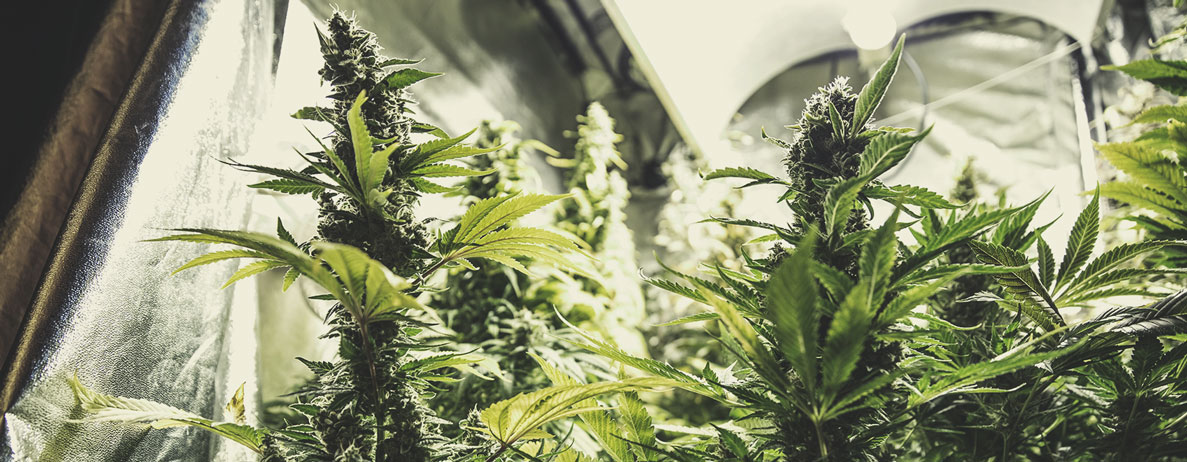
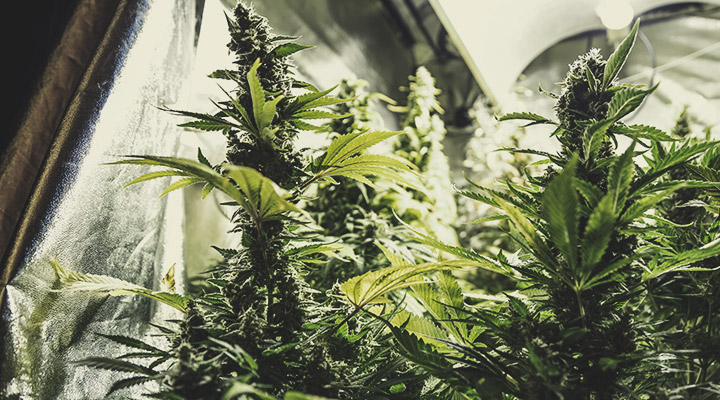
Tips for Using the Best Reflective Materials
You know the benefits of using reflective materials in your growing space, and you’re aware of the available options at hand. Now it’s time to learn a few tips and tricks. Grab the material of your choice, and use the knowledge below to put it to proper use.
-
Avoid Creases and Bubbles
Instal your reflective material as neatly as possible, and try to make it sit flush against the wall or side of your grow tent. Creases and bubbles create dips and ridges in reflective material that can cause issues. First of all, these irregularities can direct too much light to a particular spot. As well as leaving some areas of the canopy deprived of reflected light, it can cause “hot spots” and burn portions of your plant. Creases and bubbles can also cause light to shoot off at extreme angles, such as toward the floor and ceiling, meaning you're wasting precious resources.
-
Cover Walls, Doors, and Openings
Don’t just focus on the walls in your growing room. Plenty of light can also hit the doors. Place a layer of reflective material over your doors to make the most of the otherwise wasted light. You should also consider small, irregular corners that trap light. Place a sheet of material over the entire opening, instead of the surfaces within the corner, to reflect the most light back as possible.
-
Check Your Work With a Light Meter
Light meters (or lux meters) are a handy tool in the arsenal of any indoor grower. These devices measure lux, a unit that indicates the amount of light that hits a particular spot (equal to one lumen per square metre). By taking lux meter readings around your canopy before and after installing reflective materials, you’ll see first-hand how much of a difference they make.
-
Keep Your Reflective Material Clean
There’s no point in installing fresh and clean reflective materials if you don’t look after them. They’ll soon become coated in dust and grime, which will change the colour of the surface and reduce the amount of light that bounces off. Wipe down your surfaces with diluted hydrogen peroxide or isopropyl alcohol to prevent mould and bacteria from building up, and to optimise their reflective capacity. Just remember; be very careful with delicate material, such as foil, to avoid having to patch it up.
Do You Need to Add Reflective Material to a Grow Tent?
Most growing tents come lined with Mylar, meaning you won’t have to go through any additional effort. However, there are different types of growing tents available, offering varying levels of light reflection, ventilation, and durability to suit different setups and budgets.



























